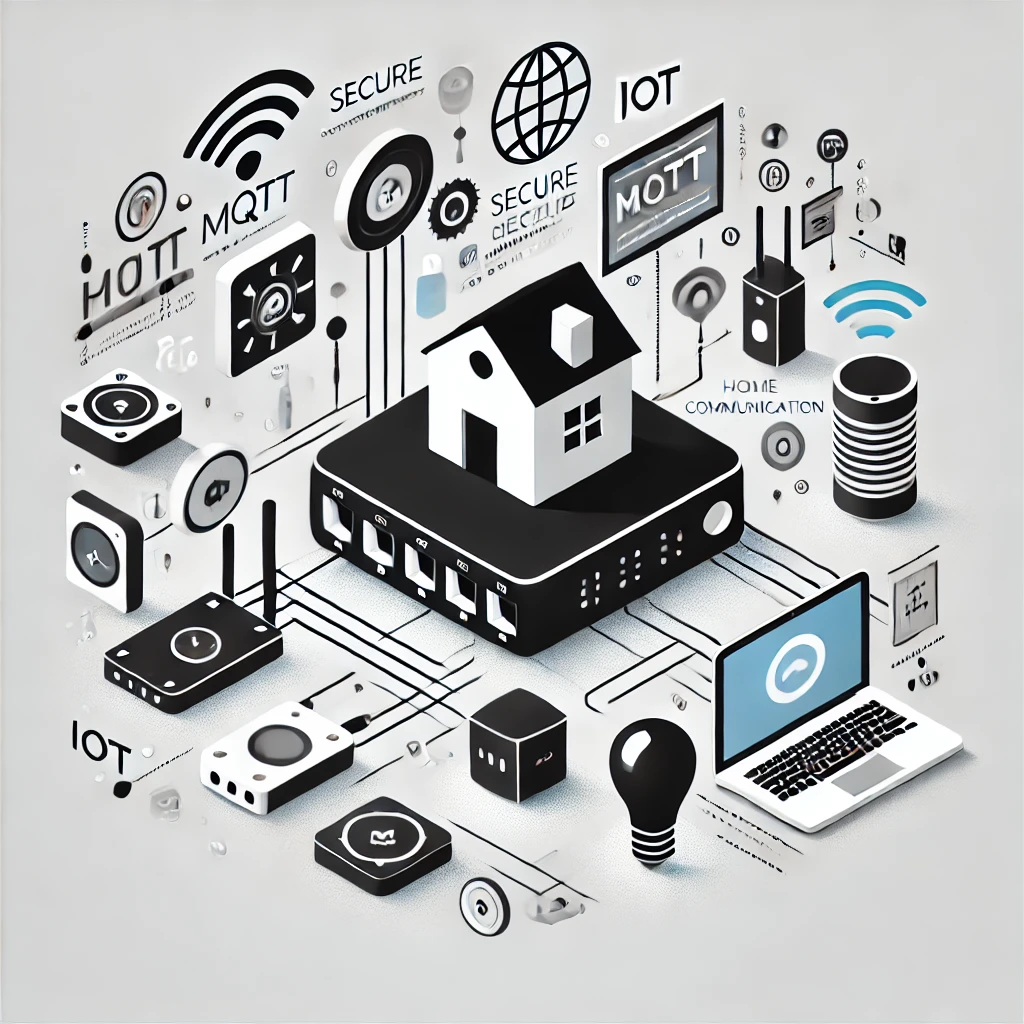Introduction to MQTT in Home Automation
Message Queuing Telemetry Transport (MQTT) is a lightweight messaging protocol designed for efficient communication in low-bandwidth, high-latency environments, making it an ideal choice for Internet of Things (IoT) applications, particularly home automation. In a smart home, MQTT acts as a crucial communication link, facilitating smooth interaction among devices like sensors, thermostats, and smart lights via a centralized MQTT broker. This model ensures that data is efficiently exchanged, even when network stability varies, which is essential for creating a unified smart home experience.
Platforms such as Home Assistant and OpenHAB leverage MQTT to integrate various devices—from motion detectors to climate control systems—under a single, responsive ecosystem.
Key Benefits of MQTT in Home Automation
- Optimized for Low-Resource Devices
MQTT’s streamlined design allows it to function effectively on devices with limited resources, such as temperature sensors, door locks, and smart lighting. By minimizing processing requirements, MQTT enables a cost-effective and efficient smart home setup for users. - Asynchronous Communication for Energy Efficiency
Through its publish-subscribe model, MQTT allows devices to communicate intermittently, conserving both bandwidth and battery life. This aspect is particularly valuable for battery-operated devices, extending their operational life and reducing maintenance. - Scalability for Expanding Smart Homes
A central MQTT broker can support thousands of concurrent connections, allowing smart home systems to expand seamlessly. This scalability ensures homeowners can integrate new devices over time without overburdening their network. - Quality of Service (QoS) Options
MQTT offers three Quality of Service (QoS) levels, providing flexible message reliability to match each device’s communication needs. This adaptability is crucial in ensuring reliable connections for critical applications, such as security alerts or environmental monitoring. - Enhanced Security
MQTT supports SSL/TLS encryption, securing data in transit and addressing privacy concerns. This level of protection helps mitigate cybersecurity risks, safeguarding personal data within the home. - Real-Time Interactions for Immediate Response
The publish-subscribe model facilitates instantaneous data transfer, making MQTT suitable for real-time applications. For instance, an MQTT-enabled thermostat can immediately adjust settings based on live sensor readings, enhancing both comfort and energy efficiency.
Setting Up MQTT in Smart Homes: Step-by-Step Guide
Here’s how to set up an MQTT communication system in a smart home using Python and the Paho MQTT library, featuring a simulated temperature sensor and a thermostat.
Step-by-Step Code Example
Step 1: Install the Paho MQTT Library
Install the MQTT library by running:
pip install paho-mqttStep 2: Set Up the MQTT Broker
Install Mosquitto, a popular MQTT broker, or select a cloud-based option like HiveMQ or Eclipse MQTT.
# Install Mosquitto on Ubuntu/Debian
sudo apt-get install mosquitto mosquitto-clientsStep 3: Publish Simulated Temperature Data
The following code generates random temperature readings and publishes them to an MQTT topic every few seconds:
import paho.mqtt.client as mqtt
import random
import time
broker = 'localhost'
port = 1883
topic = 'home/livingroom/temperature'
client = mqtt.Client()
client.connect(broker, port, 60)
def publish_temperature():
while True:
temperature = round(random.uniform(20.0, 25.0), 2)
message = f"{temperature}°C"
client.publish(topic, message)
print(f"Published: {message} to {topic}")
time.sleep(5)
if __name__ == '__main__':
try:
publish_temperature()
except KeyboardInterrupt:
print("Temperature sensor simulation stopped.")Explanation
This code connects to an MQTT broker and continuously publishes simulated temperature data, ideal for testing MQTT functionality without requiring actual hardware.
Step 4: MQTT Subscriber Code for the Thermostat
This code listens to temperature updates and adjusts HVAC settings accordingly:
import paho.mqtt.client as mqtt
broker = 'localhost'
port = 1883
topic = 'home/livingroom/temperature'
def on_message(client, userdata, message):
temperature = message.payload.decode()
print(f"Received temperature: {temperature}")
try:
temp_value = float(temperature.replace('°C', ''))
if temp_value > 23.0:
print("HVAC: Cooling mode ON")
else:
print("HVAC: Heating mode ON")
except ValueError:
print("Error parsing temperature data.")
client = mqtt.Client()
client.connect(broker, port, 60)
client.subscribe(topic)
client.on_message = on_message
client.loop_forever()Explanation
This thermostat script subscribes to the temperature topic and adjusts between heating and cooling modes based on received temperature data.
Overview of MQTT Communication in Smart Homes
- Broker Setup: Install an MQTT broker, either locally (like Mosquitto) or via a cloud service.
- Device Connection: Connect publisher and subscriber clients to the broker.
- Data Publishing: The sensor device publishes data to a specific topic.
- Data Subscription: The thermostat subscribes to the topic and adjusts HVAC settings based on the data received.
Scientific and Practical References
- Banks, A., & Gupta, R. (2014). “MQTT Version 3.1.1.” OASIS Standard.
An authoritative guide on MQTT for IoT applications. - Zhao, W., Zhang, W., & Liang, X. (2018). “An IoT-based Home Automation System Using MQTT.” IEEE International Conference on Consumer Electronics.
A study on the effectiveness of MQTT in home automation. - HiveMQ Blog – “MQTT Essentials”
A detailed introduction to MQTT’s role in IoT.
MQTT Essentials - IoT For All – “The Role of MQTT in Home Automation”
Insights into how MQTT transforms IoT communication in smart homes.
The Role of MQTT in Home Automation
Conclusion
MQTT is a powerful, efficient protocol for IoT communication, particularly in home automation. Its lightweight design, scalability, and real-time interaction capability make it a foundational choice for managing smart home devices, from climate control to lighting.
